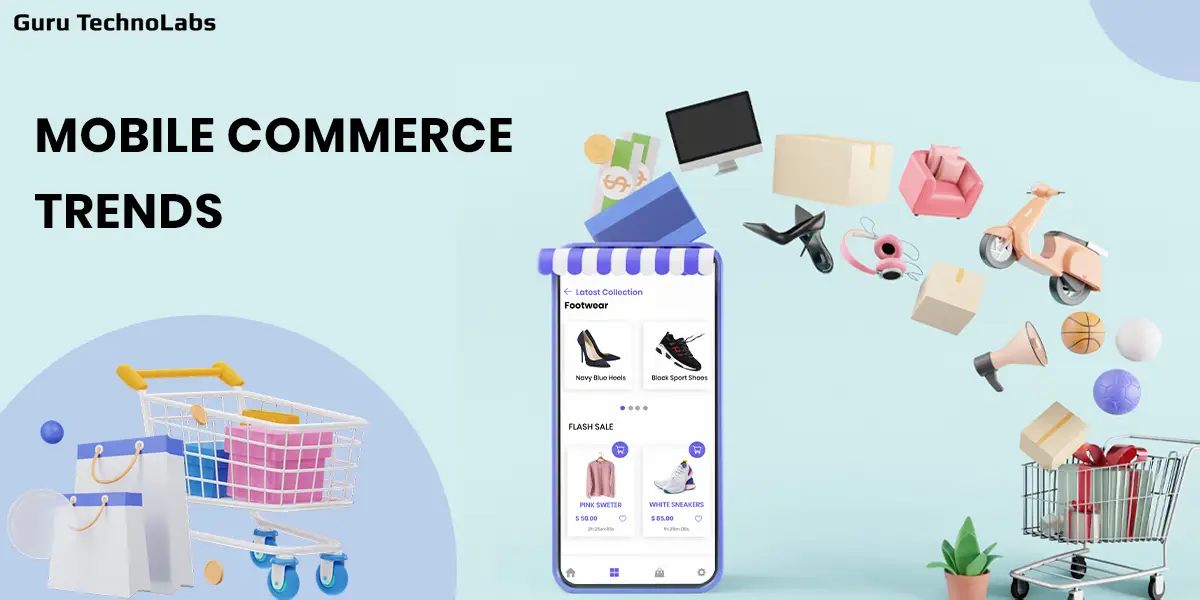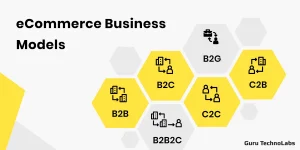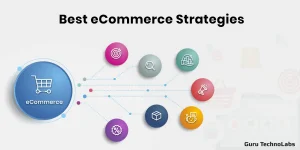10 Mobile Commerce Trends You Need to Know in 2026

Mobile commerce has grown at an unbelievable rate in the past few years. This growth has been fueled by the increased penetration of Internet services and a massive jump in smartphone sales.
The ecommerce landscape is ever-evolving, and staying up to date with the latest trends is essential for business owners. The world has become mobile-centric, as each of our daily chores includes the need for smartphones, from the convenient shopping experience at their fingertips to doing financial transactions.
In that, the significance of mobile commerce cannot be overstated. To keep ahead in this curve, exploring mobile commerce trends is a must. It helps you reach a broader audience and generate high revenue.
There are various m-commerce trends adopted by online stores worldwide. Before we move on with the trends, we will walk you through the most recent m-commerce statistics.
Latest Mobile Commerce Statistics
- The revenue generated in mobile commerce in the US was about $431 billion in 2022.
- As per Statista, the global mCommerce market revenue is expected to reach $710.42 billion by 2026.
- Based on GMInsights, mobile wallet market revenue will grow with a 15% CAGR (Compound Annual Growth Rate) between 2019-25 and is expected to reach 270 billion by 2026.
- The revenue generated in mobile commerce in the US was about $431 billion in 2022.
- Almost 80% of users have bought online using their mobile devices within the last six months.
- It is estimated that in 2023, smartphone users will reach up to 6.92 million worldwide and are expected to reach 7.8 billion by 2028.
From the above statistics, we can say that the future of mobile commerce is outstanding.
10 Best Mobile Commerce Trends to Know
Here we have researched and curated the most popular mobile commerce trends list. Implement these trends to your eCommerce app to stay ahead in the digital transformation of eCommerce.
1. Chatbots
Artificial Intelligence (AI) has transformed numerous aspects of our lives, and the area of mobile commerce is no exception.
Businesses looking to enhance customer interactions and streamline purchasing are adopting AI-powered chatbots.
Also, as per Servion, 95% of communication will be powered by Chatbots by the end of 2026.
Here is the list of benefits you will get by integrating Chatbots in your store:
- Handle multiple customers parallelly; this will help to increase customer engagement.
- It allows you to do an improved analysis of the customers by fetching information from the conversation and transferring it to the sales team. Here, you can provide personalized options to the users and increase customer engagement.
- Chatbots are highly beneficial for customers as they track orders, ask for recommendations, and get all the details in one place.
Lastly, if you want to take customer experience to the next level and make the most of your e-commerce store, you should develop AI chatbots.
2. Artificial Intelligence
Artificial Intelligence (AI) is a game-changing mobile commerce trend transforming how businesses interact with their customers.
It refers to the imitation of human intelligence in machines allowing them to perform tasks such as understanding natural language, recognizing patterns, and learning from data.
AI in mobile commerce is used to enhance the various aspects of the customer journey, leading to more personalized and efficient shopping experiences. It has the ability to analyze vast data to make accurate predictions which help businesses make data-driven decisions.
By understanding individual preferences, AI will play a crucial role in the mobile commerce landscape to deliver businesses personalized content and product offerings, fostering deeper customer engagement.
Also Read: How Artificial Intelligence in Ecommerce empowers the business to stay competitive.
3. Augmented Reality
Augmented reality has immense potential to make the shopping experience real for the customers and profitable for mCommerce providers.
As per Statista, there were 1.1 billion mobile AR user devices worldwide in 2022. In short, it has the potential to take the future of mobile commerce to a new level.

The fantastic progress of augmented reality in eCommerce apps has enabled mobile commerce app developers to introduce specific buying experiences, which are as follows.
a) AR is rapidly obliterating the distinction between mobile commerce and mortar stores through real-life experience that enhances the buyer’s online shopping experience.
b) AR allows the consumers to use the product virtually they want to buy and see how good it would look in real life before they decide whether to buy it.
For example, if you are selling paints through your mobile app, you can add a feature that allows the customer to take photos of all the walls of their room and apply the paints available in your online store virtually to see how they look in real life. It will allow them to have more informed decision-making capabilities.
c) AR allows you to provide your consumer with a more immersive m-commerce store experience.
AR can use 3D imaging technology to ensure that the individual using your app will feel like he is in a real store (the only thing missing will be the tactile experience).
d) You can add AR to your app and have an effective advertising campaign to attract more traffic.
4. Voice Shopping
Over the years, there has been a sudden increase in the usage of popular voice assistant devices such as Google Home, Alexa, Siri, etc. People across the globe perform a search with voice commands and purchase various products on the go.
Voice commands are helpful for people who use their smartphones to buy products. Many people find it harder to type something on their small screen, and in such a situation, voice commands are helpful to get information.
As per one forecast, the voice assistant-based online transaction value will reach $19.4 billion by 2023.

In short, businesses would integrate voice commands in their eCommerce app to target all such users and generate more revenue.
5. One-Click Ordering
The new form of one-click ordering in the mCommerce shopping cart is replacing the current cart system.
In this method, your customer can include information in their one-click setting like their bank details, shipping addresses, email, etc.
Once they click on a particular product displayed in your online store to buy, then the algorithm within the app will automatically use the saved setting data and connect with their bank account.
Once they make the payment, the product will be shipped to the saved address in their one-click setting. The user will instantly get an order confirmation email in the email address stored in the one-click setting.
The entire process will eliminate the problem of cart abandonment and business gain a 35.26% increase in conversion rate significantly.
Want to Empower Your eCommerce App with Latest Trends?
Our experts will guide you through implementing mobile commerce trends
that enhance your app’s performance and customer satisfaction.
6. Smart Personalization
If you want to retain customers for a long time, personalized marketing can help you.
Research has shown that 80% of customers want to buy a product from a brand that offers a highly customized experience.
Customers prefer such an experience because it gives them a higher level of satisfaction. You will also find that more and more brands use personalization to consider behavioral segmentation of customers and push notifications to send the right message at the right time.
In this process, you can record the app browsing behavior of your customers to get contextual data like their location to develop a unique message for individual buyers. Such data-driven personalized communication ensures that each customer gets relevant information at the right time, which will improve your sales conversion.
7. Social Commerce
Social commerce is referred to as the procedure of direct selling of products/services on popular social media platforms such as Facebook, Twitter, Instagram, etc.
In this end-to-end shopping experience, the shopper can start the journey with product discovery, then product research, and easy checkout.
Thanks to the great reach of social media, social commerce has grown into a massive $585 billion in 2021 and is expected to grow much more in the coming years.

With the launch of Instagram shopping a few years back, the mCommerce industry has started utilizing social commerce and generated sufficient revenue.
On the other side, people search for products on social media, particularly on mobile devices.
Here, it doesn’t matter whether consumers obtain a product link from Instagram or any social media feed; they only want quick product purchases and relevant information.
8. Crypto Payments
Even though many people are not familiar with cryptocurrencies and blockchain technology, there is a sudden increase in the adoption of crypto wallets across the globe.
As per Statista, the number of people who use Blockchain wallets has reached 82.22 million. People are shifting towards cryptocurrency payments as they offer enhanced security and transparency.

Various brands and businesses worldwide have integrated blockchain wallets, and in the next few years, it will be one of the popular mobile commerce trends.
Some of the benefits of incorporating crypto payments into your store:
- Quick transactions.
- Reduced Transaction Cost.
- Enhanced Security.
- Anonymous transactions, etc.
Ready to Take Your eCommerce App to New Heights?
We’ll help you implement the latest m-commerce trends and create a
standout eCommerce app that delivers exceptional results for your business.
9. Mobile Payment
Mobile payment is increasingly being used by buyers for purchasing goods online.
One of the forecasts by the PoS payment suggests that by 2026, this market will grow to $5.29 trillion. The popularity of mobile payment is due to its simplicity, the high rate of security it provides, and transparency.
Some of the well-known mobile payments worldwide are as follows:
- Apple Pay
- Google Pay
- Paypal
- Cash App
- Venmo
- Zelle
There are several types of mobile payment solutions that are available in the market, which gives the customers a wide choice appropriate for their requirements. Some of these mobile payment solutions include mobile wallets, direct mobile billing, and mobile web-based payment.
10. Progressive Web Apps
The progressive web apps are another essential trend in mCommerce. Along with the rise of headless e-commerce platforms, PWAs have gained significant popularity for their ability to provide seamless shopping experiences. According to analysis, the global market for PWAs is projected to reach a value of $10.44 billion by 2027.
The popularity of progressive web apps for mCommerce is due to the fact that they are offline-ready. Therefore, in case the internet breaks down, the shopper can continue with the shopping, unlike the native app.
The PWAs are super responsive. Hence, it makes the shopping experience awesome. Furthermore, you do not have to update them as they can do it automatically. These apps can work effortlessly on both iOS and Android platforms. PWA development is the perfect solution for seamless mCommerce experience.
Conclusion
From the above points, it is clear that mobile commerce is here to stay. Moreover, as we have discussed, mCommerce offers many benefits to retail businesses. Due to this, many companies are taking their business online by launching a mCommerce app.
Moreover, in the future of mobile commerce, we are about to see the integration of various new technologies.
If you are also planning to enter the retail industry by launching a mCommerce app, do not hesitate to contact us.
Guru TechnoLabs is the leading eCommerce app development company. We have developed excellent mCommerce apps for clients across the globe. Hence, we can understand your business well and provide you with an innovative mCommerce app.





















